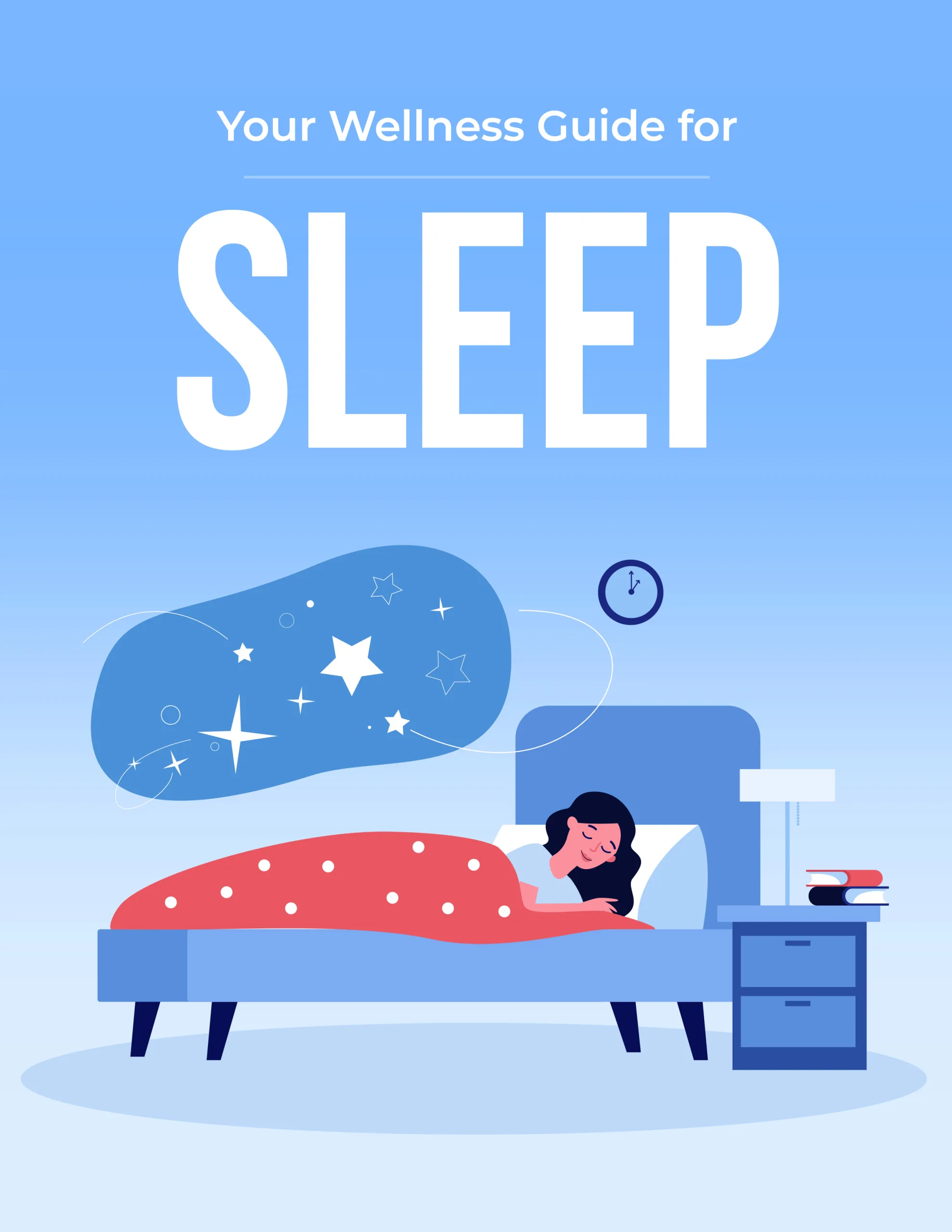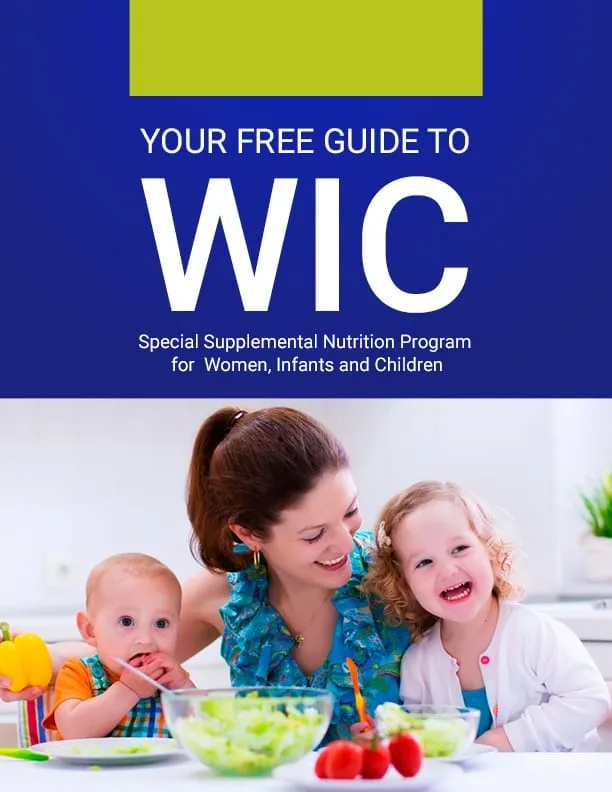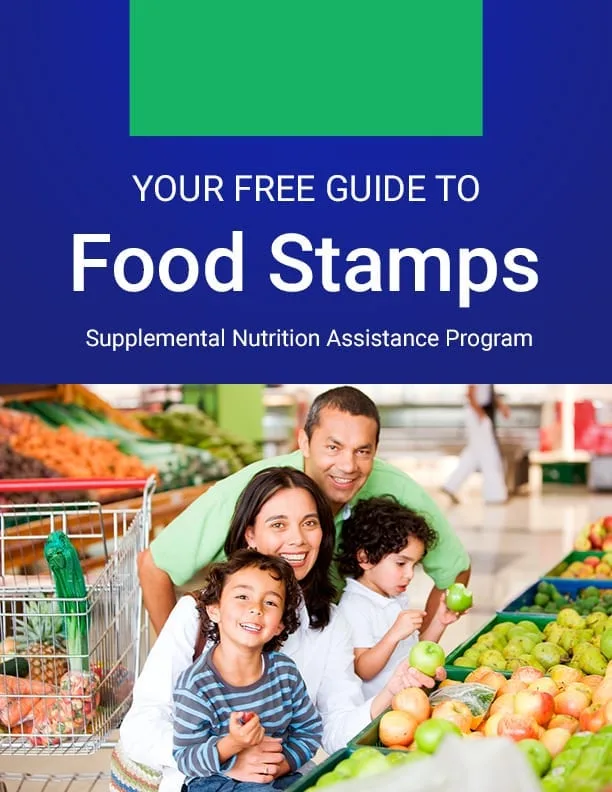How to Go Low-Carb (Atkins): Diet Guide
How to Go Low-Carb (Atkins): Diet Guide
We are privately owned and not affiliated with the government in any way or form.

There are quite a few reasons to go low-carb, but the most common involve weight loss and controlling blood sugar levels. A low-carb diet limits carbohydrates — which are found in grains, starchy vegetables and fruit — and emphasizes foods high in fat and protein. Going low-carb isn’t the easiest diet choice, especially if your current diet is carb-heavy. But it can be very beneficial and will help you address health indicators that factor into diseases like diabetes. Whatever your reasons for wanting to try low-carb, this guide will help you decide if it’s the right choice for you.
What Is a Low-carb Diet?
As the name implies, a low-carb diet restricts the type and amount of carbohydrates you eat. Carbs are a type of calorie-providing macronutrient found in many foods and beverages. They can be classified as follows:
- Simple refined, such as table sugar
- Simple natural, such as lactose in milk or fructose in fruit
- Complex refined, such as white flour
- Complex natural, such as whole grains or beans
So what are you eating on a low-carb diet? In general, you’re going to focus on eating proteins like meat, poultry, fish and eggs and some non-starchy vegetables like asparagus, Brussels sprouts and broccoli. A low-carb diet usually excludes or limits most grains, legumes, fruits, breads, sweets, pastas and starchy vegetables, and occasionally nuts and seeds. Examples of starchy vegetables include corn, potatoes and peas.
How Does a Low Carb Diet Help You Lose Weight?
The body’s main fuel source in the average diet consists of carbohydrates. Complex carbs are broken down into simple sugars during digestion. They’re absorbed into your bloodstream, where they become glucose, or blood sugar. Natural complex carbs are digested more slowly and have less effect on blood sugar. These types of carbs serve other body functions beyond fuel.
Rising levels of blood sugar then trigger the body to release insulin. Insulin helps glucose enter your body’s cells. Your body uses glucose for energy, fueling all your activities, whether you’re sleeping or jogging and everything in between. Extra glucose is usually stored in your liver and muscles for later use or is converted to fat. The idea behind a low-carb diet is that decreasing carbs lowers insulin levels, which causes the body to burn stored fat for energy. This then ultimately leads to weight maintenance or, often initially, weight loss.
How low is low-carb? Well, the Dietary Guidelines for Americans recommend that carbohydrates make up 45 to 65 percent of your total daily calories. That’s about 900 to 1,300 calories for a 2,000-calorie-per-day diet. A low-carb diet recommends that only 80 to 240 calories come from carbs per day. That’s a big change for a lot of folks, which may lead some to be hesitant about trying this diet.
The Atkins diet was the first popular low carb diet. The idea behind it is that when we eat food high in carbs, especially simple carbs, it causes a spike in our blood sugar and leads to cravings where we eat more carbs. When we eat a low carb diet, blood sugar is stable and cravings are eliminated (after time, as the body adjusts).
The first phase of the diet, which lasts two weeks, you would eat almost no carbs, just 20 -25 grams a day. This puts your body into ketosis, where it switches from burning sugar and storing fat to burning stored fat. As you lose weight, you would steadily add more carbs to your diet, but just complex carbs such as whole grains and never added sugar or white flour. By the time you have reached your goal weight and are in maintenance, you would be eating up to 100 g of carbs daily.
4 Phases
There are four phases of the diet, and as you progress, you will add back certain types of foods.
| Phase 1 | Phase 2 | Phase 3 | Phase 4 | |
|---|---|---|---|---|
| Foods | 20-25 g carbs | 25-50 g carbs | 50-80 g carbs | 80-100 g carbs |
| Foundation vegetables, proteins, healthy fats, most cheeses | Yes | Yes | Yes | Yes |
| Nuts and seeds | Yes | Yes | Yes | Yes |
| Berries, cherries, melons | No | Yes | Yes | Yes |
| Whole milk Greek yogurt, ricotta, cottage cheese | No | Yes | Yes | Yes |
| Legumes | No | Yes | Yes | Yes |
| Tomato juice | No | Yes | Yes | Yes |
| Additional fruits | No | No | Yes | Yes |
| Starchy vegetables | No | No | Yes | Yes |
| Whole grains | No | No | Yes | Yes |
Foods in Each Group
There is no calorie counting or portion control but you do need to count and control the amount of carbs you consume. This means that you need to know how many carbs there are in common allowed foods. Below are the foods in each group allowed in the first phase and their carb counts:
- Proteins (no net carbs) – Three 4-6 oz servings per day
- Fish – Flounder, herring, salmon, sardines, sole, tuna, trout, cod, halibut
- Poultry – Cornish hen, chicken, duck, turkey, quail, pheasant, ostrich
- Shellfish – Clams, crab, mussels, shrimp, squid, lobster
- Meat – Bacon (not cured with sugar), ham (not cured with sugar), beef, lamb, pork, veal, venison
- Eggs
- Fats (no net carbs) – Recommended 2-4 tablespoons per day
- Butter
- Mayonnaise
- Olive oil
- Canola oil
- Walnut oil
- Soybean oil
- Grapeseed oil
- Sesame oil
- Sunflower oil
- Artificial sweeteners (1 g per packet) – Three packets per day
- Sucralose
- Saccharine
- Stevia
- Beverages
- Water – at least eight 8-ounce glasses per day
- Clear broth/ bouillon (make sure it has no sugars added)
- Club soda
- Cream, heavy or light
- Decaffeinated or regular coffee and tea*
- Diet soda (be sure to note the carb count)
- Flavored seltzer (must say no calories)
- Herb tea (without added barley or fruit sugar added)
- Unflavored soy/almond milk
- Cheese – Total of 4 oz daily
- Parmesan, grated .2 g carbs for 1 tbsp
- Goat cheese .3 g carbs for 1 oz
- Bleu cheese .4 g carbs for 2 tbsp
- Cheddar cheese .4 g carbs for 1 oz
- Gouda .6 g carbs for 1 oz
- Whole milk mozzarella .6 g cards for 1 oz
- Swiss 1 g carbs for 1 oz
- Feta 1.2 g carbs for 1 oz
- Foundation vegetables (serving is ½ cup unless otherwise noted)
- Raw endive, watercress, or escarole .1 g carbs
- Green olives (5 olives) .1 g carbs
- Arugula .2 g carbs
- Radish (each) .2 g carbs
- Raw spinach .2 g carbs
- Cooked bok choy .4 g carbs
- Raw lettuce .5 g carbs
- Heart of palm (each) .7 g carbs
- Black olives (5 olives) .7 g carbs
- Raw button mushroom .8 g carbs
- Marinated artichoke (each) 1 g carbs
- Raw celery (1 stalk) 1 g carbs
- Cooked spinach 1 g carbs
- Cooked broccoli rabe 1.2 g carbs
- Haas avocado (half) 1.3 g carbs
- Raw white/red onion (2 tbsp) 1.5 g carbs
- Cooked Swiss chard 1.8 g carbs
- Asparagus (6 stalks) 1.9 g carbs
- Raw green bell pepper 2.2 g carbs
- Cooked eggplant 2.3 g carbs
- Cooked kale 2.4 g carbs
- Raw tomato (small) 2.5 g carbs
- Cooked portobello mushroom (each) 2.6 g carbs
- Cooked yellow squash 2.6 g carbs
- Raw red bell pepper 3 g carbs
- Cooked Brussel sprouts 3.5 g carbs
- Cooked mashed pumpkin 4.7 g carbs
- Raw garlic (2 tbsp) 5.3 g carbs
- Cooked snow peas 5.4g carbs
- Cooked tomato 8.6g carbs
- Herbs and spices
- Basil, cayenne pepper, cilantro, dill, oregano, tarragon – no net carbs
- Parsley and chives .1 g carbs
- Fresh grated ginger, dried rosemary, and ground sage (1 tbsp) .8 g carbs
- Black pepper (1 tsp) and garlic (1 clove) .9 g carbs
- Salad dressings
- Red wine vinegar no net carbs
- Caesar (2 tbsp) 1 g carbs
- Ranch (2 tbsp) 1.4 g carbs
- Lemon juice (2 tbsp) 2 g carbs
- Bleu cheese (2 tbsp) 2.3 g carbs
- Lime juice (2 tbsp) 2.4 g carbs
- Balsamic vinegar (1 tbsp) 2.7 g carbs
- Creamy Italian (2 tbsp) 3 g carbs
Other Recommended Steps
In addition to limiting your carb intake, the Atkins diet recommends a few other things to do to maximize your weight loss and health while on the diet.
- Eat three meals a day plus two snacks. To keep your blood sugar steady, you should not go more than 4-6 hours between meals.
- Do not eat excessive amounts of protein even though it has no carbs because it will make you sluggish and may slow your weight loss.
- Do not eat too much fat because it is high in calories and may slow weight loss.
- Drink eight 8 oz glasses of water (coffee, tea, and other clear beverages count as long as there is nothing in them like sugar)
- More than half of your daily carbs (12-15 g) should be from foundation vegetables.
- Eat protein at every meal (three 4-6 oz servings per day).
- Watch out for hidden carbs, especially in sauces and dressings.
- If you have a sweets craving, Atkins sells its products that have low net carbs.
Once you are within 15 pounds of your goal weight, you can transition to Phase 2.
If you want to learn more, read on to see the benefits of going low-carb.
Pros of Going Low-Carb

Low-carb diets have been around for a while — most notably as the Atkins diet, created in the 1960s — so there’s plenty of research behind it. Many people swear by its knack for getting people to lose weight or to reduce risk factors for heart disease and diabetes. Check out a few reasons why low-carb is worth a try.
- It works for weight loss. According to the Harvard School of Public Health, there is some indication that a low-carb diet helps some people lose weight more quickly than a low-fat diet. It also helps with maintaining that weight loss.
- It’s heart-healthy. According to a 20-year study, women who ate low-carb diets that were high in vegetable sources of fat or protein had a 30 percent lower risk of heart disease.
- It reduces hunger. One study reported that low-carb diets reduce hunger since you’re eating more protein and fat. Filling up on veggies can also help you stay full for longer periods.
- It lowers the risk of diabetes. Another study found that women had a 20 percent lower risk of type 2 diabetes on this type of diet compared to women who ate high-carb, low-fat diets. However, women who ate low-carb diets that were high in animal fats or proteins did not see any such benefits.
- Immediate benefits for the diabetic. If you’re overweight and have prediabetes or diabetes, cutting back on carbs can have quick health benefits. Your blood sugar and insulin levels go down, your triglycerides and blood pressure will likely fall and your levels of “good” HDL cholesterol may rise.
- Track record. Low-carb diets have been around for a while, so there are plenty of cookbooks, guides, and tips on how to make this diet work for you. All that information is just a Google search away.
- Can help people who are sensitive to gluten. By having a structured eating plan, gluten-sensitive individuals can feel full without gluten-rich grains.
Cons of Going Low-Carb
While many people have seen success on low-carb diets, some doubt their lasting viability. Those against the diet practice claim that cutting carbs is difficult in the long term and that the health effects are dubious. Explore some of the arguments against low-carb diets below.
- Side effects. Low-carb diets sometimes put your body in a state of ketosis, which means your body is relying on its fat stores for fuel instead of carbs. The initial side effects of ketosis include lethargy, bad breath, and headaches. These should subside after the first few weeks, however.
- Weight gain. If you start with an extremely low-carb diet and don’t stick to it, you may find that the initial weight loss turns into weight gain. Make sure you find a balance that works for you long-term and set realistic goals.
- Going against the guidelines. Many doctors recommend a minimum of 130 grams of carbs a day for the human brain to function optimally. By contrast, the typical low-carb diet recommends about 80 grams of carbs per day, equivalent to a couple of dinner rolls.
- Cholesterol and heart disease risks. If you eat more meat than vegetables, especially red meat and processed meats like bacon, you may find that your LDL (bad) cholesterol will rise. Levels of amino acids that increase the risk of heart disease may also go up.
- You may feel deprived. Giving up a lot of favorite carb-rich foods all at once can be difficult. Furthermore, you may miss out on the health benefits of foods like whole-grain bread and various fruits. Feel free to adjust a low-carb diet to your needs, not the other way around.
- Fiber intake. A moderate carb intake of 80 to 130 grams daily makes it easier to get all your nutrients, especially fiber. If you don’t want to miss out on fiber, add plenty of cooked veggies to your low-carb plan. Cooked broccoli, for instance, has more than double the fiber of raw broccoli.
- Questionable efficacy. One study found that after a year, there was no significant difference in weight loss between low-carb and low-calorie diets.
How to Go Low-Carb
Start Slowly
The easiest way to fail at something is to try doing too much all at once. Going cold turkey on carbs is a fast track to the unpleasant side effects of ketosis. Start by giving up or reducing carbs at dinnertime and slowly work your way up, adding more low-carb meals every week. Avoid or reduce your consumption of sugar and starchy foods like bread, pasta, rice, beans, and potatoes. Fill up on protein (especially vegetable protein) and healthy fats and eat until you’re full. You don’t need to count calories or weigh your food.
Carbs CuttingTips
- Stop drinking sugar-sweetened drinks and fruit juice. They have a lot more sugar than you probably think they do. For example, one can of regular soda has 35 g of sugar and a small sweet iced tea has 29.5 g of sugar. A ten-ounce bottle of 100% apple juice has 35 g of sugar. That is more than you should be getting in an entire day on phase 1, and it is all in quickly metabolizing simple sugar which leads to fat gain and contributes to diabetes risk.
- Replace carb-heavy snacks with protein-rich snacks. When you eat snacks like chips, pretzels, and crackers, their high carb content and low protein content prevent you from filling up and feeling satiated. Substitute a hard-boiled egg, nuts, or cheese.
- When dining out, replace starchy sides with vegetables or salad. Potatoes, rice, and pasta can quickly increase the carbs in a meal out. Ask the server to substitute non-starchy vegetables like broccoli or asparagus or a side salad with oil and vinegar.
- For baked goods, try using alternative flours. Coconut and almond flour has a lot fewer carbs than white wheat flour and they also have filling protein. Keep in mind that the texture may be a little heavier than you are used to.
- Read labels on packaged food. Look for the number of carbs per serving, whether it has added sugar, and the portion size to see if you should eat it, and if so, how much.
Low-Carb Shopping Tips
To get started, you can buy any of the foods on the allowed food list. As a recap, meat and eggs are on the menu. Beef, pork, chicken, lamb, and free range eggs are all great options. All types of fish are also recommended, especially those high in omega-3, such as tuna, salmon, mussels, and sardines. When you go grocery shopping for a low-carb lifestyle, stock up on leafy greens, cauliflower, cabbage, broccoli, and low-carb, nutrient-dense fruit like berries or avocados. To get your dairy fix, consider full-fat cheese, cream, and milk. Avoid flavored milk and dairy in large quantities. For a great snack, pick up nuts and seeds, but don’t overindulge. Avoid cashews, which are high in carbs. To get the right fats, add butter, olive oil, coconut oil, macadamia oil, and lard to your list.
What’s not allowed in a low-carb menu? For starters, sugary drinks should not make it into your shopping cart. Sports drinks, fizzy drinks, fruit juices, and energy drinks are a no-no. Avoid sweets unless you’re making a low-carb version at home. Cereals are pretty carb-heavy, so go weaning yourself off this breakfast food. Limit the bread, rice, and pasta as much as possible, as they are loaded with carbs. Certain fruits are high in carbs, so limit these when possible. Wheat and grains raise blood sugar and increase appetite, so leave them off the list. Avoid starchy veggies, especially potatoes and corn.
Certain foods are occasionally allowed, like red wine (just not the sweet varieties). Dark chocolate 85 percent or above can pass the test in moderation. Low-carb sweets made at home are alright, but if you buy them at the store make sure to read the nutritional label.
For the most part, stick to the perimeter of the store, where the produce, dairy, seafood/fish, and meat are displayed. If you want something that is easy to grab and eat or that fulfills your longing for sweets, there are low-carb packaged diet products including protein shakes, desserts, bars, frozen meals, and savory snacks. The ones from Atkins and South Beach Diet are specifically geared toward people limiting their carb intake. For anything else, read the label to decide whether to buy it. To help you while you are at the grocery store, you can print out the free carb counter, which has carb counts of common brands.
Preparing to Go Low-Carb
There are plenty of resources on low-carb diets, many of them free and online. You can, however, find many cookbooks and guides for purchase online or at your local bookstore. In addition, you can download an app that can help you keep track of your daily carbs. Here are the top ones:
- Carb Manager: Keto Diet App – While geared toward the keto diet, not a strictly low carb diet, it has plenty of foods in its library with carbs, protein, and fat counts.
- MacroTrack – Tracks all of your macronutrients including carbs.
- MyFitnessPal – This app has a free version as well as an upgraded paid version. In addition to tracking foods and their carb amounts, it can track water and physical activity.
- Atkins Carb and Meal Tracker – This app is customized for the Atkins diet and in addition to tracking carbs, lets you track your weight. It is free.
After you’ve got some information on hand, you’ll need the motivation to stick with your diet. Think about why you’re doing this. Weight loss, better health, or higher energy levels are all good reasons that will sustain you and keep you going. Going low-carb isn’t easy, but if you take it slow and make reasonable changes, you will see success in one form or another. Don’t be afraid to change the requirements of a diet to fit your needs, and don’t lose hope if you give in to that carb-heavy bowl of pasta; just get on track the next day.
A Day in the Life of the Low-Carb Diet

Wondering what you can eat on a low-carb diet? There are plenty of delicious recipes for you to try, from protein pancakes to buffalo chicken salad. There’s no reason to feel excessively hungry when you’ve got such great options for healthy eating.
Breakfast: Almond protein pancakes with blueberries
Ingredients
- 2 tablespoons blanched almond flour.
- 3/4 large egg (whole).
- 1 ½ tablespoon whole grain soy flour.
- 1/4 teaspoon baking powder (straight phosphate, double-acting).
- 1/2 ounce large or small curd creamed cottage cheese.
- 2 tablespoons vanilla whey protein.
- 1/4 cup fresh blueberries.
Cooking Instructions
- Combine the almond flour, protein powder, soy flour, and baking powder. Stir in the beaten egg and cottage cheese until blended.
- Heat a large nonstick skillet or griddle over medium heat. Lightly grease with butter or canola oil.
- Using about 1/4 cup per pancake, drop batter onto the skillet. When bubbles begin to form in the middle of each pancake, turn over and cook another 2 minutes or until firm.
- Serve with blueberries or add blueberries to the pancake batter before cooking.
Lunch: Buffalo chicken salad
Ingredients
- Half a lemon.
- 1 medium green onion.
- 1 head romaine lettuce.
- 2 medium stalks of celery.
- 1 medium red sweet pepper.
- 1 medium tomato.
- 1 large egg.
- 5 1/3 tablespoons apple cider vinegar.
- 1/8 teaspoon celery salt.
- 1/8 teaspoon red or cayenne pepper.
- 2 chicken thighs and skin (bones removed).
- 1/4 cup real mayonnaise.
- 2 tablespoons sour cream.
- 2/3 ounces blue cheese.
- 1/8 teaspoon garlic powder.
- 1/3 teaspoon salt.
- 1/4 teaspoon black pepper.
- 1/4 cup of canola oil.
Cooking Instructions
- Preheat oven to 450 degrees Fahrenheit. Juice the lemon into a large bowl, discarding any seeds. Finely chop the green onions and add to the bowl; set aside. Add the mayonnaise, sour cream, blue cheese, and garlic powder to the bowl with the lemon juice and green onions. Stir to combine.
- Cut the romaine lettuce into one-inch pieces and place it into the large bowl with the dressing. Cut the celery into half-inch pieces at a slant and add to the romaine. Remove the stem, pith, and seeds from the red bell pepper and discard. Cut the bell pepper into ¼-inch thin strips. Cut the tomato into one-inch diced pieces and add to the bowl. Set in the refrigerator until step five.
- Use a fork to beat the egg in another medium bowl. Add the apple cider vinegar, 1/4 cup canola oil, 1/4 teaspoon of black pepper, 1/3 teaspoon of salt, the celery salt, and cayenne pepper and stir until well combined.
- Pat the chicken thighs with paper towels and add to the marinade, then place on a sheet pan lined with foil. Bake for 18 to 20 minutes, turning the thighs and brushing with the marinade several times, until cooked through and crisp. Cut the chicken thighs into half-inch diced pieces and set them aside for step six.
- Remove the salad from the refrigerator and toss to combine.
- Divide the salad between two plates and place the chicken in the center. Enjoy!
Dinner: Asian veggie and pork bowl
Instructions
- 4 medium young green onions.
- 1/4 ounce cilantro (coriander).
- 4 ounces of brown mushrooms.
- 1/4 ounce ginger.
- 1 clove of garlic.
- 1/2 Serrano pepper.
- 5 ounces of Chinese cabbage (bok-choy, pak-choi).
- 1 Italian tomato.
- 8-ounce pork tenderloin.
- 1 cube chicken stock (dry, dehydrated).
- 1 tablespoon organic tamari.
- 1 tablespoon vegetable oil.
Cooking Instructions
- Slice the green onions into ¼-inch pieces at a slant and set aside. Remove the stems from the brown mushrooms and discard the stems. Cut the mushrooms into ¼-inch slices and set aside. Remove the cilantro leaves from the stems and discard stems. Roughly chop the cilantro and set it aside.
- Peel the ginger and finely chop. Then, set aside. Finely chop the garlic cloves and set them aside. Remove the stem, pith, and seeds from only half of the Serrano pepper and discard. Finely chop and set aside. Remove the baby bok choy end and cut it into very thin slices lengthwise; set aside. Cut the tomato in half lengthwise. Cut each half into three wedges and set to the side.
- Pat the pork tenderloin dry with paper towels and then cut into ¼-inch thin slices. Heat a medium sauté pan with one tablespoon of canola oil over medium-high heat. Once hot, add the pork tenderloin slices and sear them for two to three minutes until browned and cooked through. Remove the pork from the pan and set it aside.
- Bring the chicken stock, tamari sauce, and two cups of water to a boil in a large saucepot over high heat. Reduce the heat to medium-high, add the mushrooms, ginger, garlic, serrano, and the baby bok choy. Simmer for five minutes until the bok choy is tender but still crisp and the mushrooms are soft.
- Add the tomatoes, green onions, and the pork to the saucepot. Heat for one minute. Remove from the heat and stir in the cilantro.
- Ladle the soup into two bowls and enjoy!
Snack Suggestions: Avocado crisps, black pepper beef jerky, buffalo chicken celery sticks, hummus, cauliflower tots, kale chips, lemon cheesecake bars, salty lime roasted nuts, and stuffed mushrooms.Drink Suggestions: Water with lemon, coconut water, tea, soy milk, coffee, vegetable juice, and wine.







